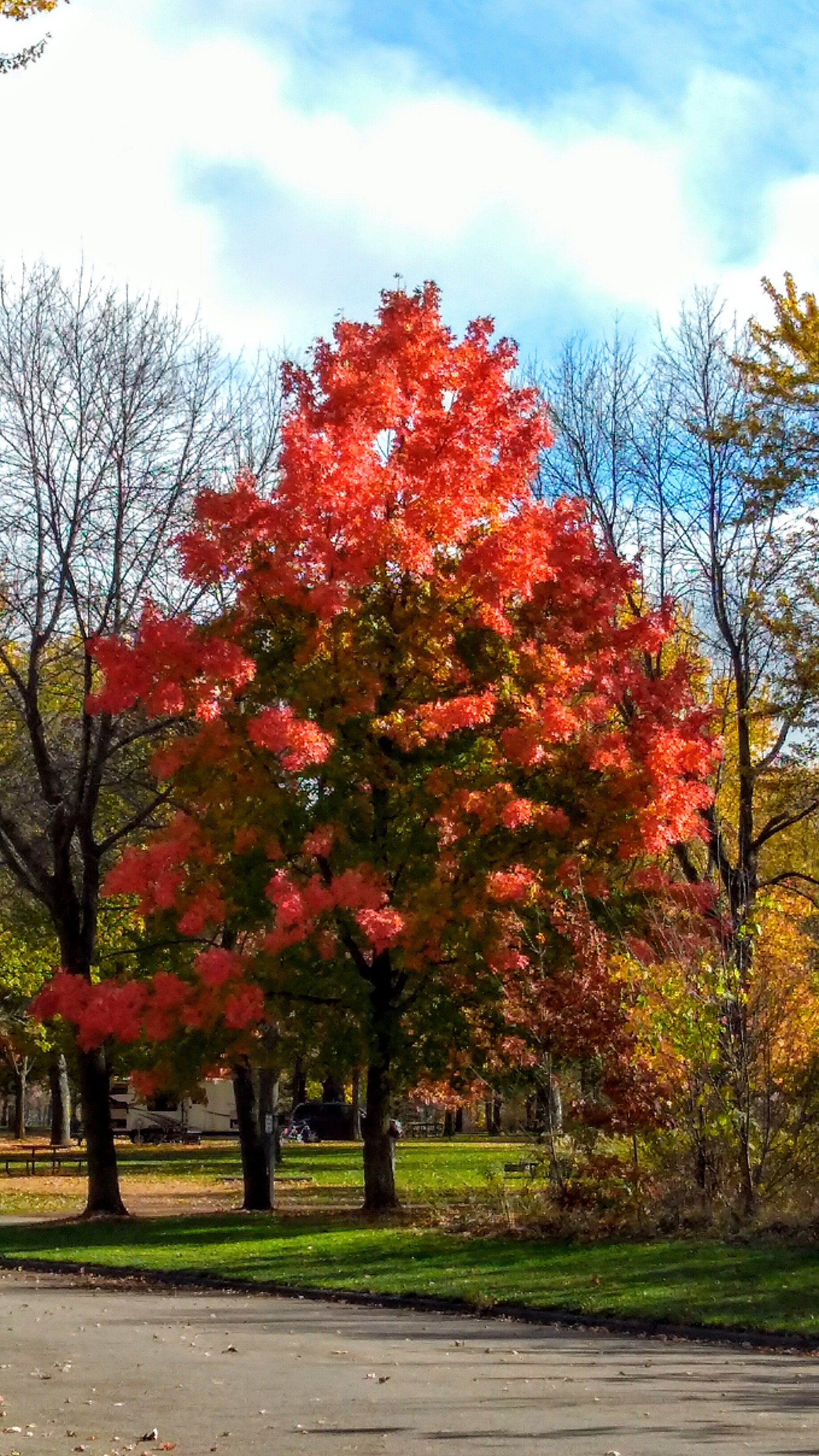Deciduous Trees
Deciduous Trees
Or, if you're like my partner, the trees with the big leaves. These include oaks, elms, cherries, maples, aspen, birch, and many others here in Minnesota. The fall is when many of these trees create a striking display with their vibrant colors and falling, crunchy leaves.
Deciduous trees tend to lose their leaves during the winter months. The lack of sunlight and water drives the tree to grow a layer of cells at the base of the leaf. This layer is called the "abscission layer." It stops the flow of nutrients and water into the leaf, which causes the leaf to change color, dry out, and eventually fall off the tree. Many reasons have been theorized for discarding leaves. First, the leaves cost more energy than they would be able to make in the winter, thanks again to the lack of liquid water and sunlight. The dry winter air causes desiccation, and anyone living in Minnesota with a drawer full of half-used chapsticks can agree. There is also less surface area for heavy snow to land on, and therefore less stress on the branches. Finally, the nutrients in the leaves typically fall close by and can be reabsorbed by the tree roots once spring warms the ground.
However, the observant may notice that some trees, like oaks, keep their leaves through the winter. The abscission layer on these trees does not completely form until spring, allowing the leaves to remain on the branches. This process is called "marcescence." There is no consensus on why, but the most common thought is that this may protect the tree from deer browse. Deer love oak and will start to eat the tree buds as winter scarcity increases. Another idea comes from Oak trees thriving with common, low-intensity fires, which decreases competition. Oaks may hold their leaves to create potential spring fire starters. Whatever the reason, marcescence is convenient for helping to identify these trees in the winter.












